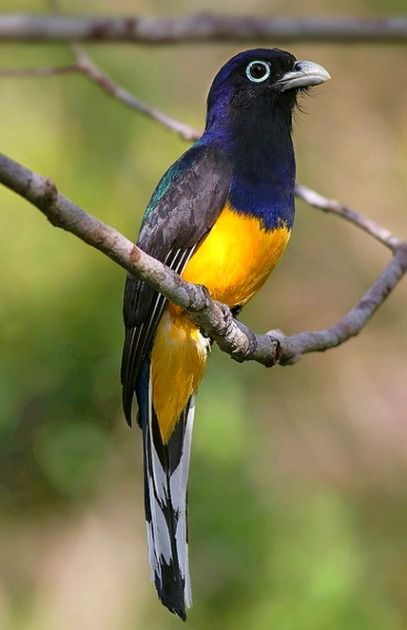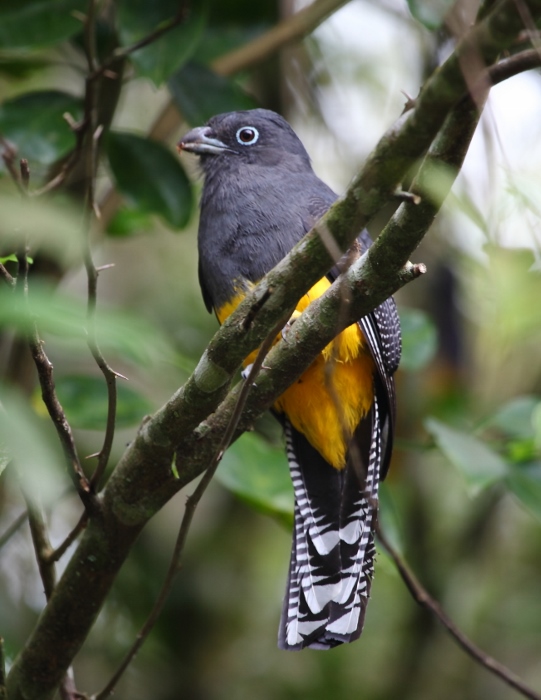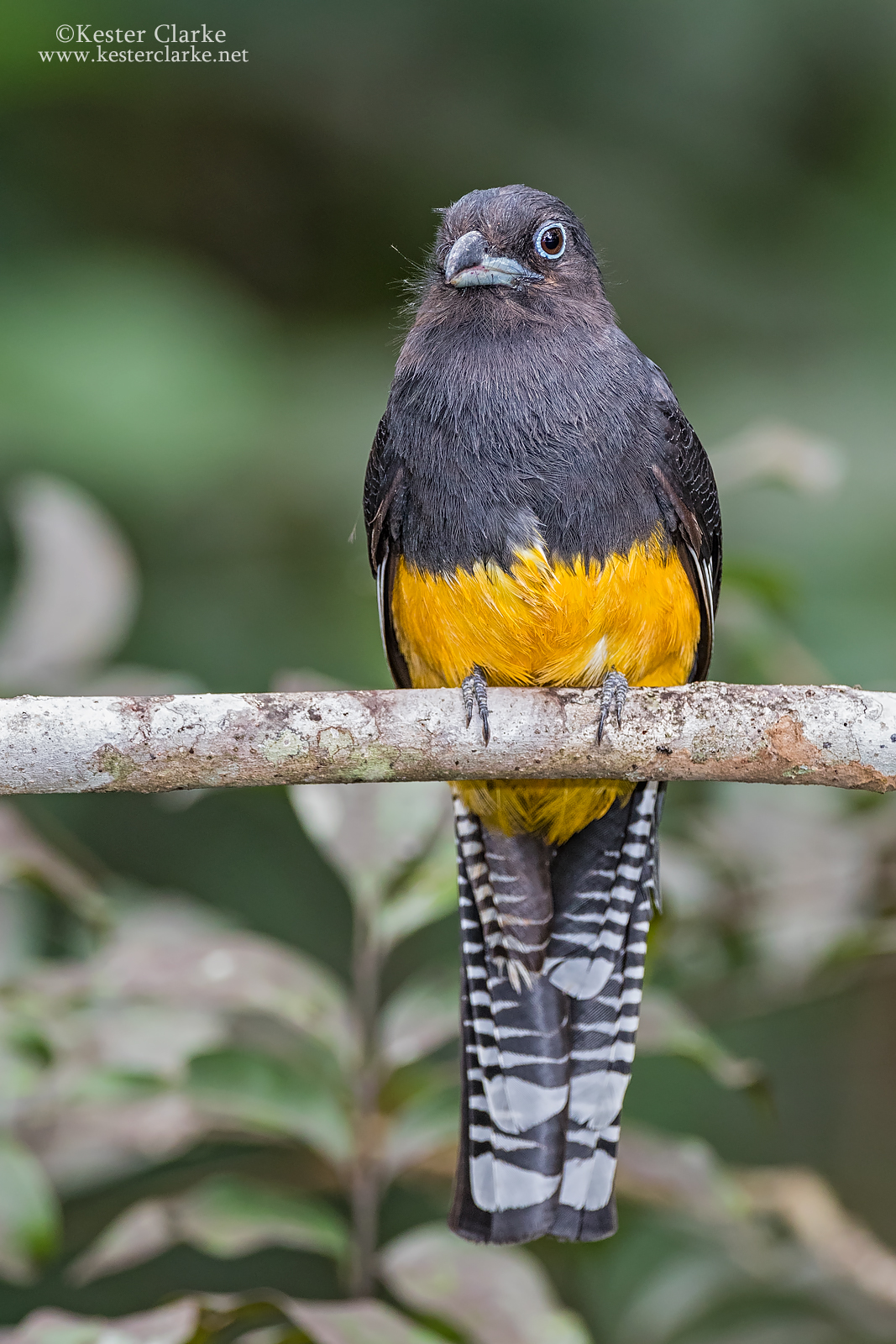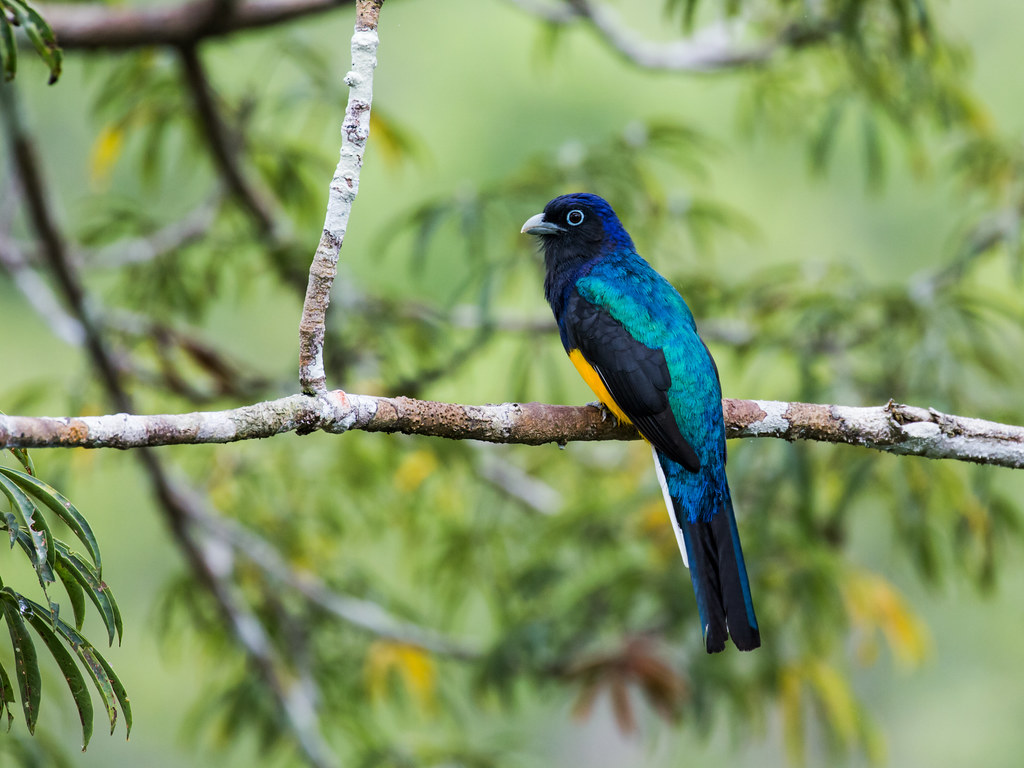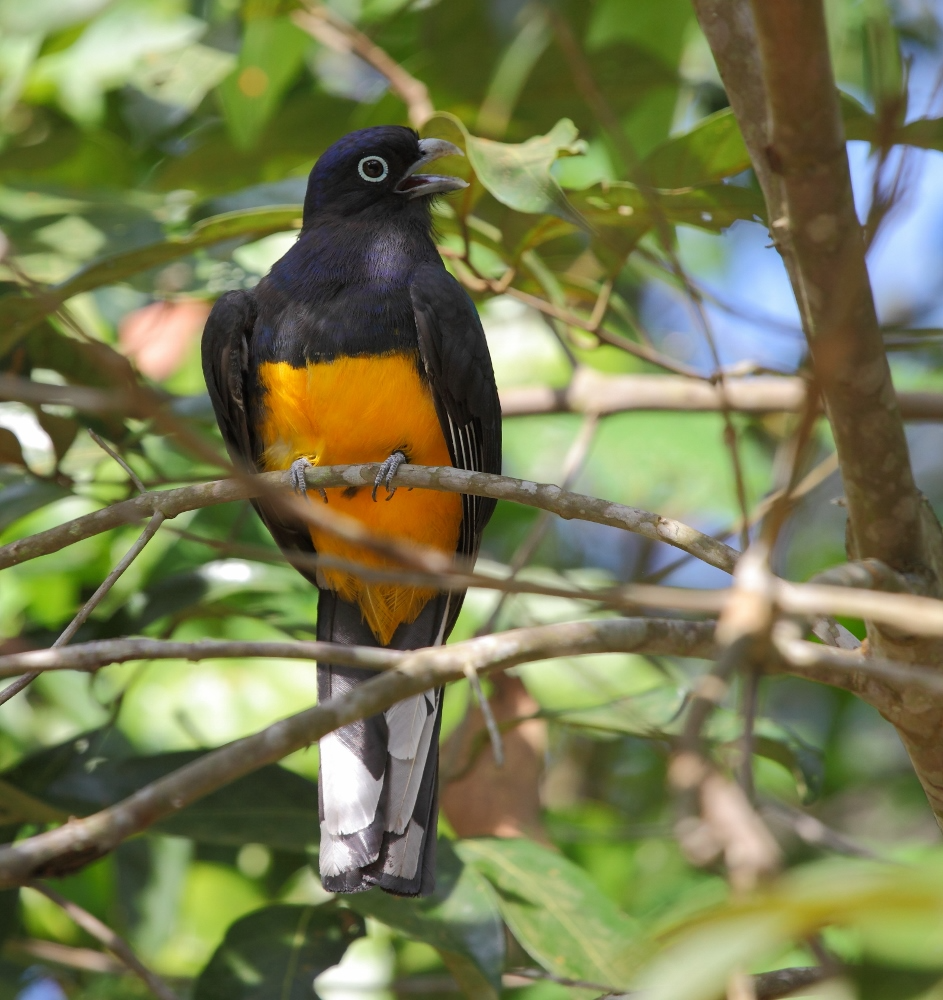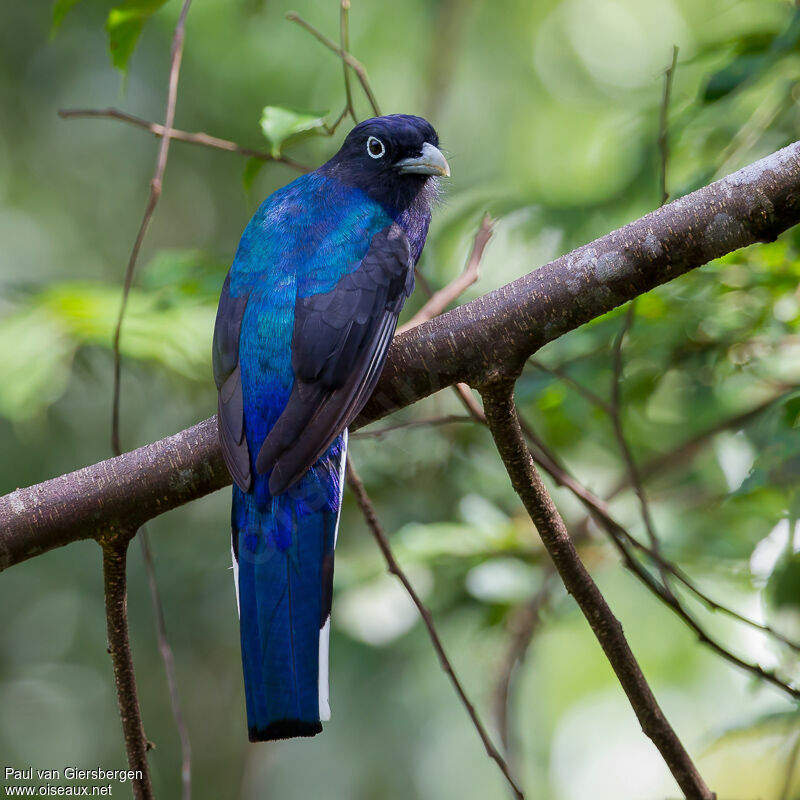In the heart of the humid South American jungle, amid the melodic notes of “kua kua kua kua,” nature unveils its marvelous creation—the Green-Backed Trogon. This avian gem, painted in glistening emerald green, is a testament to the artistry of the natural world.
The green-backed trogon (Trogon viridis) is the largest of the yellow-bellied trogons, measuring 28.5 cm (11.2 in) in length. As is the case with most Trogons, they are strongly sexually dimorphic, the male having a dark blue iridescent head and breast, while the back is iridescent green. Underparts are orange to yellow, the wings black, vermiculated with white. He also has large tail tips finished off in white and an eye ring that is pale blue.
Photo Courtesy of Hector Bottai / CC BY-SA 3.0
Female birds resemble the male, though they have a gray back, head, and breast, along with highly distinctive barring to the outer webs of each tail feather.
The song of the green-backed trogon consists of about 20 cow notes that start slow, but accelerate towards the end.
“File:Trogon viridis -Smithsonian National Zoological Park, Washington DC, USA-8a.jpg” by Michael Bentley is licensed under CC BY 2.0.
These birds are found in the tropical humid forests in South America, where its range includes the Amazon, the Guiana Shield, Trinidad, and the Atlantic Forest in eastern Brazil.
They like to live in and around humid tropical forests, usually being the commonest trogon in their range.
Having such broad bills along with weak legs, Green-backed trogons tend to dine mainly on fruit, supplementing this with arthropods and lizards more so during the dry season when the fruit is harder to come by.
“File:Trogon viridis (Green-backed Trogon), male, Restinga de Bertioga – SP – Brasil.jpg” by Hector Bottai is licensed under CC BY-SA 3.0.
They nest in termite colonies or in holes of rotten trees with the nest usually, though not always built by the female who excavated an upward-sloping tunnel to a breeding chamber. this is normally done from June through to August after which a clutch of 2 to 3 white eggs are laid. These are incubated for 16 – 17 days, with two more weeks to fledged chicks.
Relatively common throughout its range, the Greem-backed trogon is regarded as of Least Concern on the IUCN Red List.
“Green-backed Trogon (Trogon viridis) Trinidad jan 2014” by Feroze Omardeen is licensed under CC BY 2.0.
You can watch the Green-backed Trogon right here in the video below:

